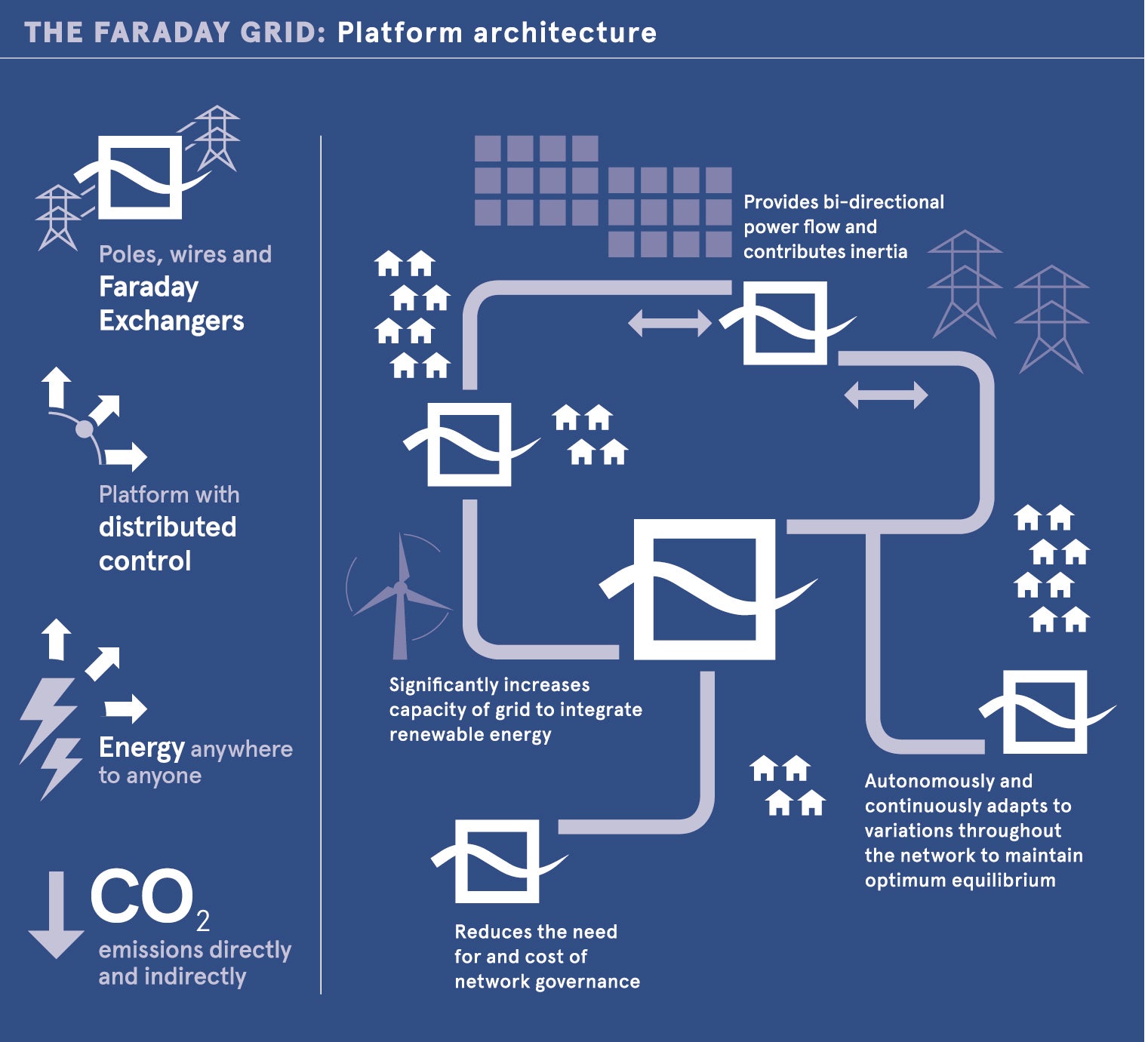The UK’s energy system has traditionally been based on synchronous, centralised power generation using a hub-and-spoke model: a small number of large power plants supplying relatively constant power one way to centres of demand, such as cities and industrial areas.
The need to decarbonise, however, has driven the move to asynchronous renewable sources, such as wind and solar, which are distributed widely throughout the electricity grid. These provide more variable power, and change the quantity and direction of energy flows in the system.
At the other end of the system, the way we use energy is also changing, as consumption by digital devices continues to grow and more electric vehicles divert energy previously used in the transport sector on to the grid.
Despite these major changes to the patterns of supply and demand, the grid itself, which transports power instantaneously to where it is needed, fundamentally has not changed for more than 100 years. The challenge today is how to manage these new energy flows through century-old technology.
The physics of the near-instantaneous movement of energy makes it extremely difficult to control. Disturbances, such as power cuts or blackouts, are often caused because problems observed at the edge of the grid – sudden changes to supply or demand – can’t be responded to fast enough from a central control point. As electricity generation becomes increasingly decentralised, with large fossil fuel plants replaced by renewables, these complexities create increasing and costly fragility in the grid.
“The lack of change in the electricity grid is holding back the transition to more affordable and reliable energy,” says Matthew Williams, founder and chief technology officer at Faraday Grid. “The approach to date has been to just add new technologies to the grid to try to manage the problem. These can no doubt help mitigate some of the issues but, by keeping the fundamental architecture the same, you are inherently limited in the scale of improvement you can make.
“What is needed is a fundamental rethink of the existing system to create a platform that enables new technologies, not the other way round.”

The need to drive drastic improvements in the architecture of the electricity system is critical for the energy sector and, most importantly, for end-consumers. The cost of generating energy from solar and wind is now lower than coal or gas, yet the move to more renewable sources has in fact increased energy prices for consumers. This is because the cost of balancing services, which National Grid must procure to maintain a constant balance of supply and demand, reached £2 billion in the UK last year and continues to grow. These costs are ultimately passed on to the consumer.
With the rising cost of energy consumption more than offsetting the declining cost of generation, consumers and businesses will continue to suffer energy price hikes unless the complexities in the grid itself are comprehensively addressed. UK-based Faraday Grid is building a unique solution: a decentralised platform for energy that radically increases the capabilities of the existing grid.
“No one idea, technology or company can provide the silver bullet to solve all of the problems in the energy system,” says Mr Williams. “We are enabling a platform specifically designed to allow all of these technologies, from renewables, batteries, electric vehicles, machine-learning algorithms and others yet to be invented, to collaborate without the need for centralised control. This collaboration is what will deliver the necessary transition to the energy system of the future.”
Faraday Grid believes that to make the grid fit for purpose, it should be underpinned by a system of decentralised control. This is similar to the principle behind the internet, where there is no master control point monitoring and controlling the whole system. All the agents in the system co-operate under a common set of rules to achieve the common goal; for the internet, this is the open sharing of information. Faraday Grid’s vision is to do this to create an open and secure energy system.

In its platform of energy, the Faraday Grid acts like the internet: an autonomous, self-balancing network, agnostic to different technologies or patterns of supply and demand. The Faraday Grid is based on networks of Faraday Exchangers, the company’s hardware devices. These act like the internet router, replacing existing equipment (transformers) to change radically how power flows through the network and enable new technologies to be connected without increasing the fragility of the system.
“This has never been possible before,” says Mr Williams. “As a transformer reaches its end of life, you can literally just pull it out and drop in a Faraday Exchanger and it will automatically make its local area of the electricity network work better. The more exchangers in a network, the bigger the impact will be. It needn’t be a huge big-bang changeover though; you can do it incrementally at no net additional cost.
“Ten years ago, the UK grid had about 80 points of generation within it; today it has almost a million. With so many rooftop solar panels and wind turbines going up, the energy system in its current iteration will no longer work. Faraday Grid is bringing control of the entire energy system to the grid itself. This will enable high levels of renewable energy at an affordable cost and, ultimately, sustainable, reliable and affordable energy for everyone.”
For more information please visit faradaygrid.com


